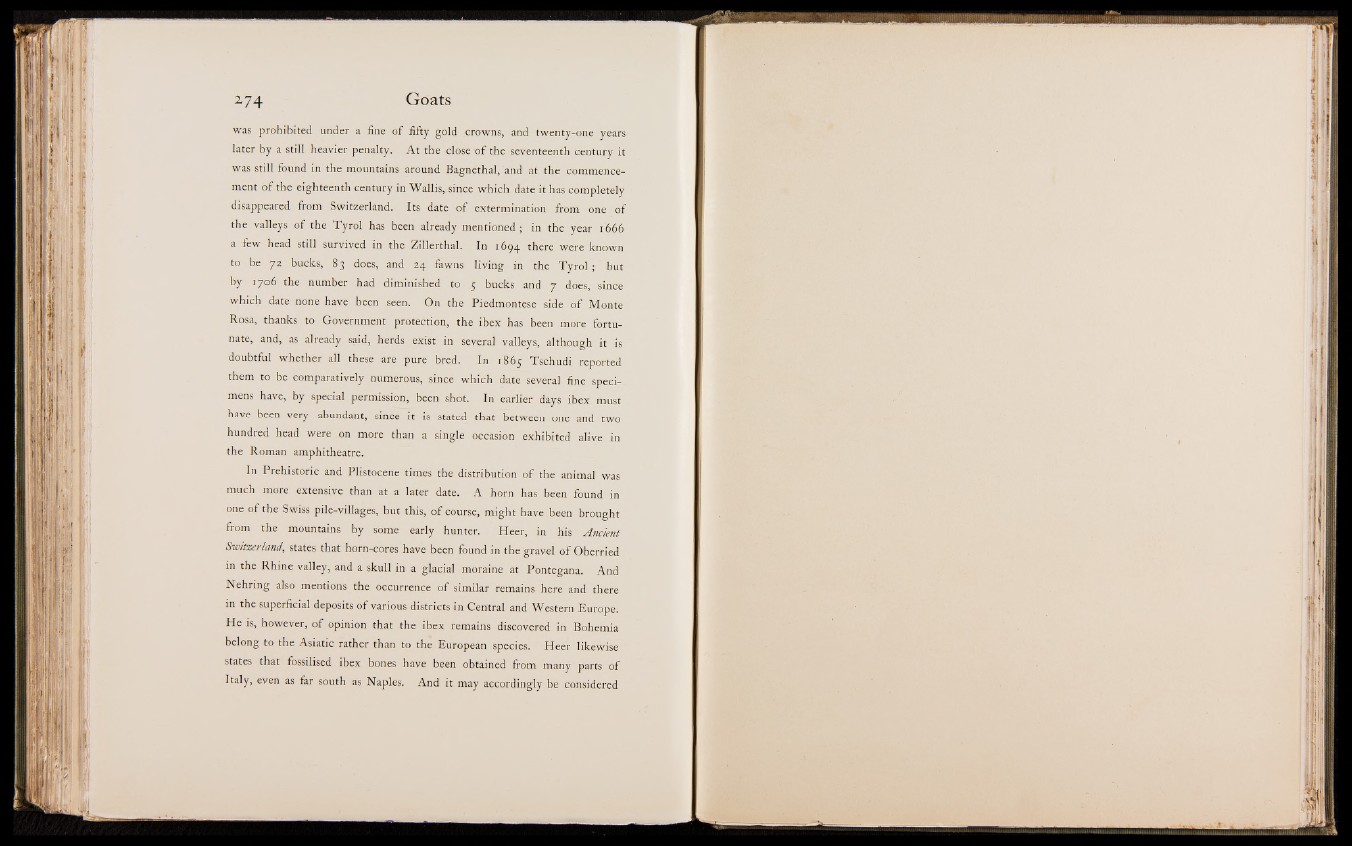
was prohibited under a fine of fifty gold crowns, and twenty-one years
later by a still heavier penalty. At the close of the seventeenth century it
was still found in the mountains around Bagnethal, and at the commencement
of the eighteenth century in Wallis, since which date it has completely
disappeared from Switzerland. Its d a teB f extermination from one of
the valleys of the Tyrol has been already mentioned ; in the year 1666
a few head still survived in the Zillerthal. In 1694 there were known
to be 72 bucks, 83 does, and 24 fawns living in the Tyrojf; but
by 1706 the number had diminished to 5 bucks and 7 does, since
which date none have been seen. On the Piedmontese side of Monte
Rosa, thanks to Government protection, the ibex has been more fortsSf
nate, and, as already said, herds exist in several valleys, although it is
doubtful whether all these are pure bred. In 1865 Tschudi reported
them to be comparatively numerous, since which date several fine sped-_
mens have, by special permission, been shot. In earlier days ibex must
have been very abundant, since it Is; stated that between one and two
hundred head were on more than a single occasion exhibited alive in
the Roman amphitheatre.
In Prehistoric and Plistocene times the distribution of the animal was*.
much more extensive than at a later date. A horn has been found in
one of the Swiss pile-villages, but this, of course, might have been brought
from the mountains by some early hunter. Heer, in his Ancient
Switzerland., states that horn-cores have been found in the gravel o f Oberried
in the Rhine valley, and a skull in a glacial moraine at Pontegana. And
Nehring also mentions the occurrence of similar remains here and there
in the superficial deposits of various districts in Central and Western Europe.
He is, however, of opinion that the ibex remains discovered in Bohemia
belong to the Asiatic rather than to the European species. Heer likewise '
states that fossilised ibex bones have been obtained from many parts o f
Italy, even as far south as Naples. And it may accordingly be considered